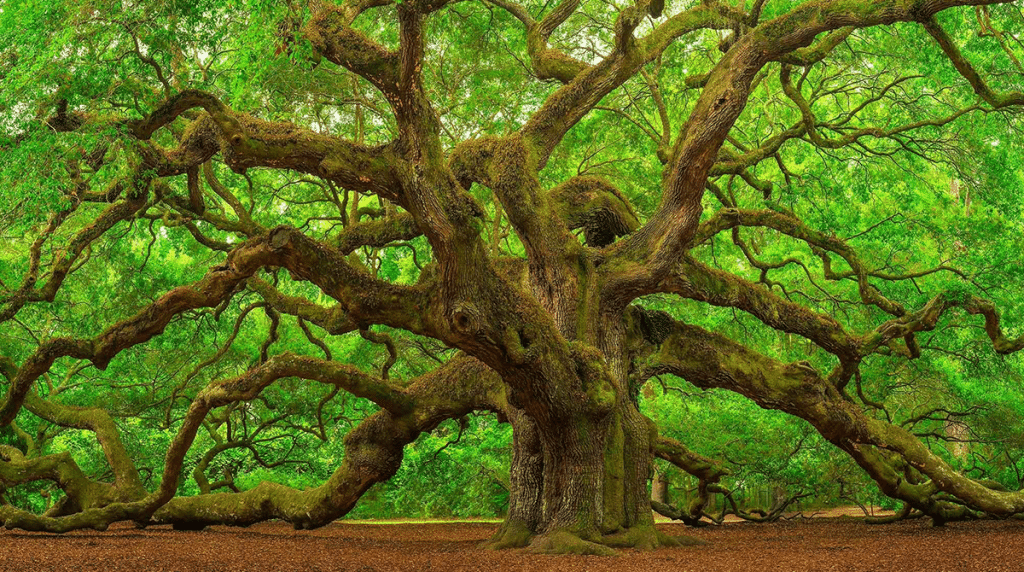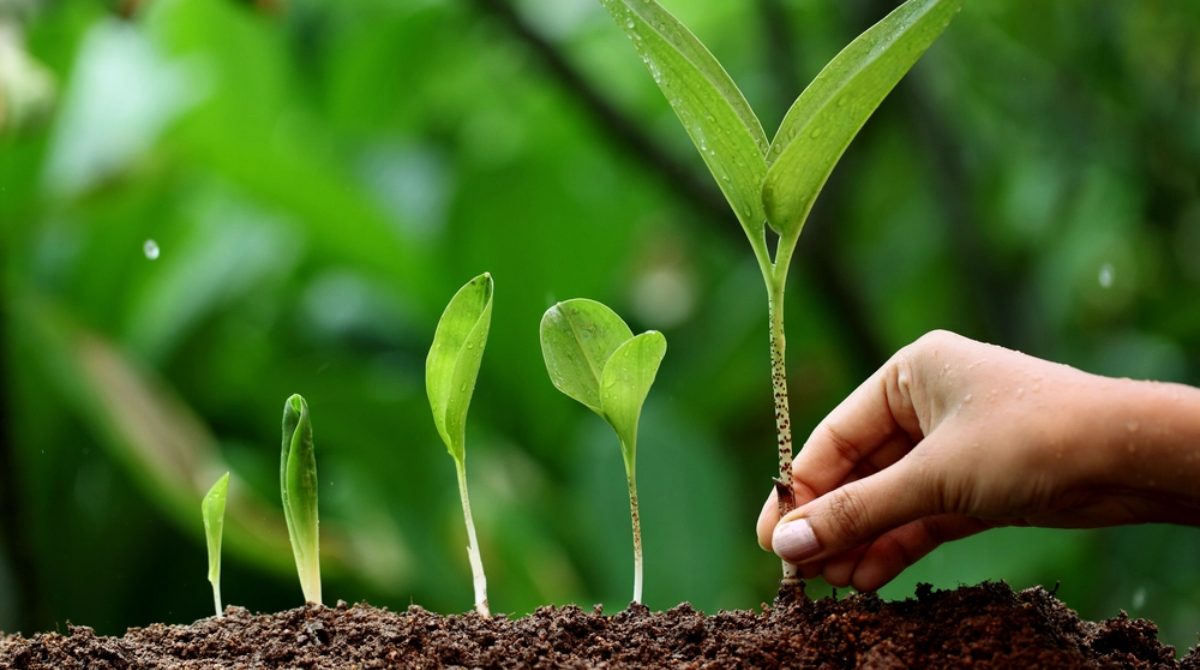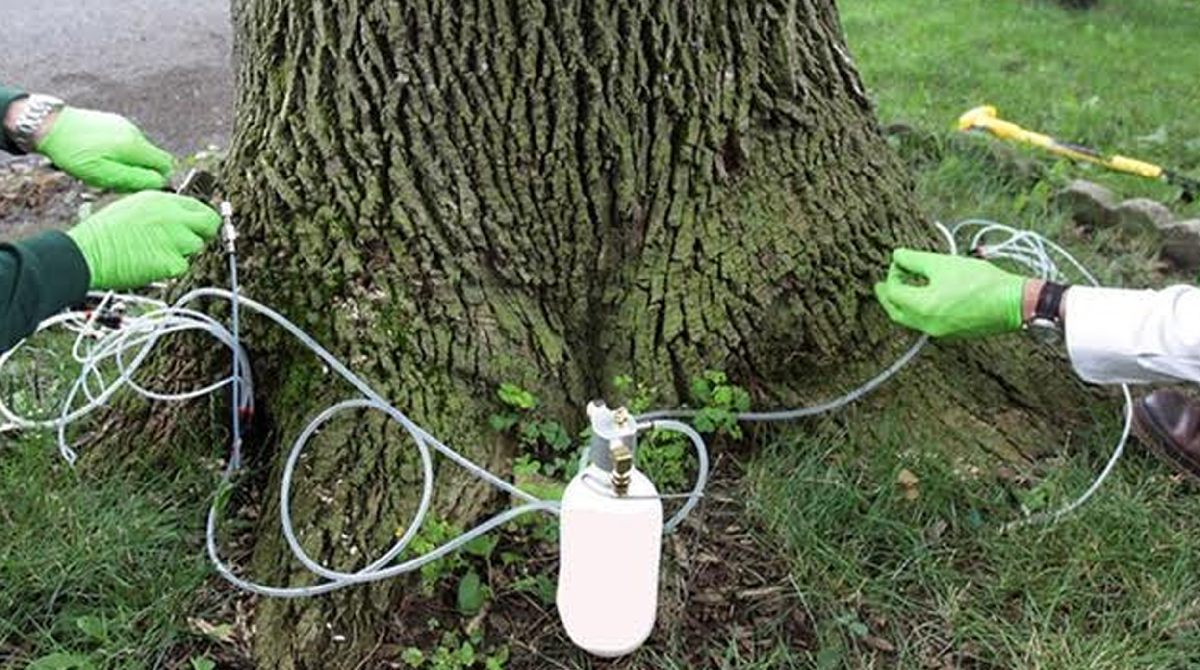
Complete All in One Tree Care Guide for Oak Trees
Date November 25, 2020
Category
The mighty oak tree is one of the most popular and easily-recognizable plants in the forest and in anyone’s beautiful backyard. But, taking care of an oak tree requires more than just tossing some acorns around and hoping they grow.
Unfortunately, the overall oak tree population is dwindling. This is largely due to acorns and oak saplings serving as a delicious meal for wildlife. Unfortunately, when acorns and saplings get eaten up and don’t get a chance to grow, we end up seeing fewer of those mighty oaks that have been around for hundreds of years.
If you’re interested in planting and caring for an oak tree, you can play a role in bringing their numbers back up and giving the mighty oak the reputation it deserves once more.
So, how can you care for an oak tree from the very beginning in order to make sure it grows and thrives?
Growing an Oak Tree Using Acorns
If you truly want to start growing an oak tree from the ground up (no pun intended), you can use acorns.
While you might be tempted to gather up the first acorns you see falling from an existing oak, it’s best to wait for the second “batch” of them to fall. When you do, make sure you gather as many as possible. Picking up one acorn and planting it will likely lead to nothing. Oaks have a notoriously low germination rate. So, the likelihood of one acorn growing is slim.
Needless to say, you should be taking handfuls of acorns if you want to see successful growth.
Once you’ve collected enough acorns, be sure to examine them closely. Remember, they have been out in the elements and exposed to a variety of things. If you notice an acorn with small holes in it, it’s likely an insect has found its way inside. You should also pay attention to signs of mold.
You can also make sure you’re using the best acorns by soaking them in water overnight. Any that are damaged or aren’t fully matured will float to the top. You’ll be left with mature, healthy acorns ready for planting at the bottom.
Red oak acorns will need to be planted a bit differently (you can see how to spot the differences in the next section). Instead of just planting them directly into potting soil, as you can with white oak acorns, they should be planted in a zippered plastic bag with a bit of moist peat moss for about eight weeks. Then, you can plant them in the soil.
You can plant several acorns in one pot. Just make sure you are planting them about an inch deep in at least 12 inches of soil.
Know What You’re Planting
When you’re collecting acorns, take some time to examine the leaves of the oak tree from which they fell. Leaf identification is one of the easiest ways to determine which category you’re dealing with.
Red oak trees have leaves that are sharp and jagged. The leaves of white oak are more rounded and ‘flat’ looking. If you happen to be collecting acorns in the fall, you can also tell which type of tree you’re collecting from by looking at the color of the leaves. True to the name, the leaves of a red oak become vibrant and richly-colored in the fall. White oak leaves look somewhat dull and brown.
While you should be able to get a clear picture of which type of oak you’re collecting from by the leaves, you can double-check by inspecting the bark. Red oak trees typically have a smoother bark without any deep ridges. White oaks, on the other hand, have rough bark with deep furrows.
Why does it matter which type of oak tree you plant? For some, it’s a matter of personal preference. However, it’s also important that there are both red and white oak trees in any healthy ecosystem. Red oak trees tend to have slower growth. So, planting both will help to ensure that the white oaks will grow more rapidly and be immediately introduced into a particular ecosystem, giving the red oaks time to grow slowly. It’s also important to keep in mind that even though most oaks are stereotyped as being huge, they all grow to different sizes and may not live hundreds of years due to a variety of different factors, including some common diseases that require tree trimming and removal.
There are also different varieties, including the live oak tree. Live oak trees are also often called “evergreen oaks” because they maintain a vibrant green color throughout the year. Live oak tree wood is also tougher and harder than most other varieties of oak. Again, knowing what you’re planting can make a big difference in the ecosystem and your personal preference.
Transplanting an Oak
Transplanting oaks can be difficult. That’s especially true for white oaks. However, it isn’t impossible. You can transplant your seedling as soon as the leaves begin to unfurl. Newly-planted saplings absolutely need to be protected from weather and wildlife, though. There are a few tips you should keep in mind when you’re choosing where to plant an oak:
- Choose the right location. Not only do you need to choose a location that doesn’t see much wildlife, but you have to choose a spot that will give your oak a chance to grow.
- Put a cage or fencing around the sapling to protect it from animals like deer. Make sure that the fencing is big enough for the oak to grow, and remove the fencing before the oak outgrows it.
- Although it can be tempting to fertilize your sapling(s), it can actually do more harm than good. Fertilizer can lead to rapid growth spurts, but that can actually cause damage to the bark. It may also make your trees more prone to insects and infection. Don’t fertilize until the sapling has been in the ground for at least two years.
- If you’re worried that you don’t have “good soil” to plant your oak, a good rule of thumb is to take some soil from underneath an existing oak tree to mix in with your own. This can help to stimulate growth and give the sapling the nutrients it needs.
If you want to transplant an oak that has been growing for a few years, it’s important to take every possible precaution. But, an oak tree can be transplanted until it is 5-8 feet tall. It is during this time that severing the root won’t cause any severe damage to the tree. Any taller than that, and you may end up killing the tree instead of transplanting it successfully.
How to Care for an Oak Tree
The name “mighty oak” isn’t just about the size of these powerful trees. They are actually quite robust plants that can withstand a variety of conditions. Because of that, they’re relatively low-maintenance trees after they are planted and grow several feet.
If you want to give your oak tree the best chance of growing tall and mighty, there are a few general care tips to keep in mind.
First, it’s important to note that oak trees do best in areas that experience different seasons. This tends to give them the moisture they need, as well as the right temperatures for growth and health. If you tend to have dry summers and moist winters, you have the perfect environment for an oak!
If you experience dry winters, you will need to supplement by watering your oak(s) heavily in the spring. You can also water them once or twice if you’re experiencing an especially dry summer. However, more often than not, nature will take care of everything your tree needs.
In addition to watering correctly, it’s also important to give your oak enough room to breathe and grow. If you want to plant anything else around your oak, it’s best to choose drought-resistant plants and keep them at least six feet away from the base of the tree itself. Adding a few inches of mulch around each tree will also keep it from drying out and can limit weeds from growing up around it. If they do, they can steal essential nutrients from the tree, making it more susceptible to rot or issues with growing properly.
When to Prune Your Oak
Obviously, when you see a live oak tree or a standard oak in a natural wooded area, no one has taken the time to prune it or give it trim but, if you’re growing an oak in your backyard, pruning it annually can actually be very beneficial.
Not only will pruning help to control the size and shape of your tree, but it can get rid of branches that have become diseased. Doing so can improve the overall health of your oak, but pruning will also slow growth. You should only trim a branch when it is diseased or dead. Trimming away branches completely, especially those that face the sun, could cause damage to the tree’s interior.
If you do choose to prune, it’s essential to do it at the right time. You should never prune your oak between March-July. Doing so can make them more susceptible to insect infestation, including the dreaded bark beetles that can destroy your tree and cause a fungal infection to occur.
Inspecting Your Tree Regularly
While oaks are fairly resilient and low maintenance, it’s a good idea to check on them periodically just to make sure they are healthy. Regular “check-ups” can ensure proper growth and limit the risk of a disease spreading throughout the tree.
You don’t need to be a specialist to monitor your oak tree’s health. Do a quick check of the leaves and the bark. Since you now know what the bark should look like for both white and red oaks, any type of discoloration or bark that has come loose from the tree is a sure sign of disease.
But, seeing patches of discoloration doesn’t mean your oak is doomed to die. In some cases, you may be able to remove the infected area without impacting the rest of the tree. Removing small, infected areas can save your oak and help to prevent further damage.
If you’re not sure how to regularly inspect your tree, consider working with an ISA Certified Arborist. Doing so will help to clear up any confusion about what to look for, and an arborist can give you even more practical advice on how to care for your tree.
Why Should You Plant an Oak?
While it might seem like planting an oak tree is a lot of work, that isn’t necessarily the case. Once they are planted and have grown enough to not be threatened by wildlife, they are incredibly easy to care for.
Not only are oak trees absolutely beautiful, but there are many benefits to planting them, including:
- They are beneficial for hundreds of varieties of moths and butterflies.
- They provide support for songbirds, thanks to the number of insects that a home on the bark.
- Their acorns are a great natural food source for animals. While that can be a bit annoying when you’re trying to grow a new oak, a fully-grown one has plenty of acorns for new trees to grow and to feed wildlife.
If you’re worried that you won’t see the rewards of planting an oak tree, that isn’t always true either! Not all oak trees take hundreds of years to grow. For example, the Pin Oak can grow over two feet each year. An average white oak will grow about a foot each year. Red oaks tend to grow a bit slower, as stated above. However, planting a variety of oaks will allow you to watch them grow and thrive and change each year.
Oak trees are an important part of the ecosystem. Thankfully, you don’t have to wait to go hiking in the woods in order to see one. With the proper care, you can successfully grow an oak tree (or multiple trees!) in your own yard. The biggest challenge you’ll face is the initial acorn planting and seedling stage, but it’s just a matter of keeping the sapling safe. Once the tree has grown several feet, you can breathe a sigh of relief.
No matter which type of oak you choose to plant, you’ll be enjoying the beautiful colors and relaxing shade for years to come.
Your neighbors at TreeNewal are here to help you. To reach our ISA Certified Arborists for professional tree maintenance and tree services, or even if you just have some questions, give us a call us today at tel:(817) 592-6846
To learn more about Complete All in One Tree Care Guide for Oak Trees, call our Argyle and Southlake based teams
at tel:(817) 592-6846 or send us a message.
We’re a little different than the average tree services company.
Learn more about TreeNewal’s ISA Certified Arborists!
Our Dallas/Fort Worth-based tree doctors can explain how sustainable tree care services add more value to your bottom line.
Healthy trees, healthy lives.








